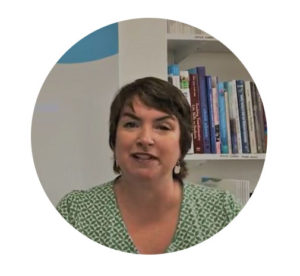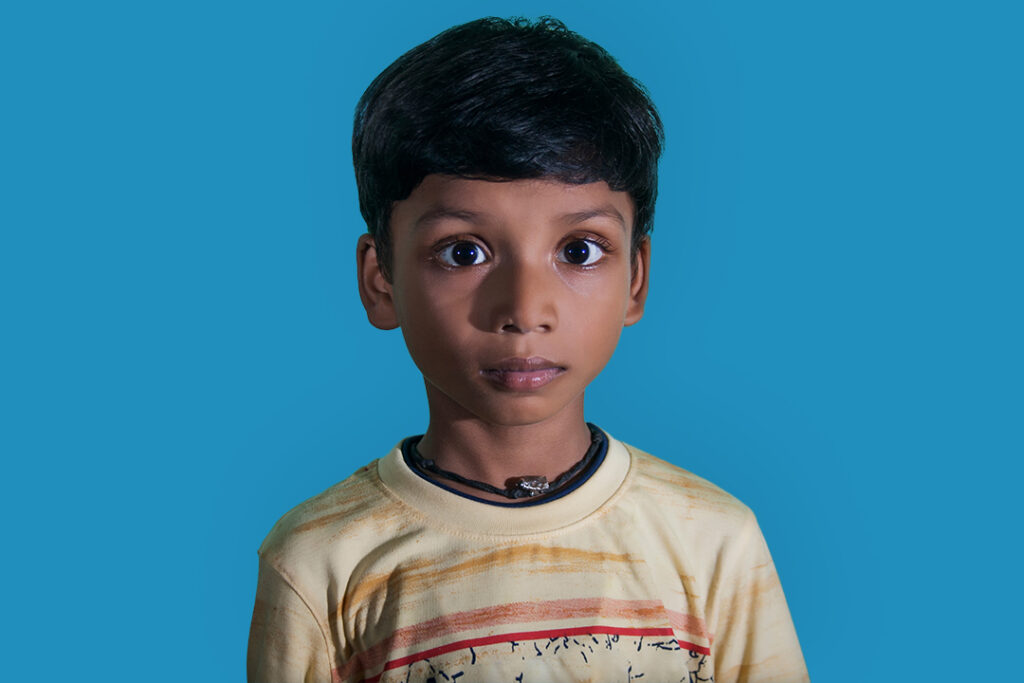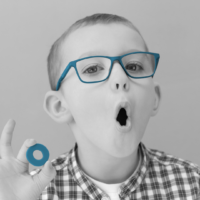Afasic: Parent-focused charity for families of children with DLD.
The Communication Trust: The What Works database is a searchable database of commonly used intervention programmes and a rating of the quality of evidence available for that programme.
ICAN: Communication charity providing information and support to the children’s workforce
Royal College of Speech Language Therapists
speechBITE: Australian database curating published trials of intervention and treatment efficacy searchable by language domain
Sources
Adams, C. (2002). Practitioner review: the assessment of language pragmatics. J Child Psychol Psychiatry, 43(8), 973-987.
Bao, L., Brownlie, E. B., & Beitchman, J. H. (2016). Mental health trajectories from adolescence to adulthood: Language disorder and other childhood and adolescent risk factors. Dev Psychopathol, 28(2), 489-504. doi:10.1017/S0954579415001054
Bishop, D. V. (2014). Ten questions about terminology for children with unexplained language problems. Int J Lang Commun Disord, 49(4), 381-415. doi:10.1111/1460-6984.12101
Bishop, D. V., & Edmundson, A. (1987). Language-impaired 4-year-olds: distinguishing transient from persistent impairment. J Speech Hear Disord, 52(2), 156-173.
Bishop, D. V., Snowling, M. J., Thompson, P. A., Greenhalgh, T., & consortium, C. (2016). CATALISE: A Multinational and Multidisciplinary Delphi Consensus Study. Identifying Language Impairments in Children. PLoS One, 11(7), e0158753. doi:10.1371/journal.pone.0158753
Bishop, D. V. M. (2006). What Causes Specific Language Impairment in Children? Curr Dir Psychol Sci, 15(5), 217-221. doi:10.1111/j.1467-8721.2006.00439.x
Bishop, D. V. M. (2010). Which neurodevelopmental disorders get researched and why? PLoS One, 5(11), e15112. doi:10.1371/journal.pone.0015112
Bishop, D. V. M. (2017). Why is it so hard to reach agreement on terminology? The case of developmental language disorder (DLD). Int J Lang Commun Disord, 52(6), 671-680. doi:10.1111/1460-6984.12335
Bishop, D. V. M., Snowling, M. J., Thompson, P. A., Greenhalgh, T., & and the, C.-c. (2017). Phase 2 of CATALISE: a multinational and multidisciplinary Delphi consensus study of problems with language development: Terminology. J Child Psychol Psychiatry, 58(10), 1068-1080. doi:10.1111/jcpp.12721
Bleses, D., Hojen, A., Justice, L. M., Dale, P. S., Dybdal, L., Piasta, S. B., . . . Haghish, E. F. (2017). The Effectiveness of a Large-Scale Language and Preliteracy Intervention: The SPELL Randomized Controlled Trial in Denmark. Child Dev. doi:10.1111/cdev.12859
Bornstein, M. H., Hahn, C. S., & Putnick, D. L. (2016). Long-term stability of core language skill in children with contrasting language skills. Dev Psychol, 52(5), 704-716. doi:10.1037/dev0000111
Bornstein, M. H., & Putnick, D. L. (2012). Stability of language in childhood: a multiage, multidomain, multimeasure, and multisource study. Dev Psychol, 48(2), 477-491. doi:10.1037/a0025889
Bowen, C. (2015). Children’s speech sound disorders, 2nd Edition. Oxford: Wiley-Blackwell.
Burgoyne, K., Gardner, R., Whiteley, H., Snowling, M. J., & Hulme, C. (2017). Evaluation of a parent-delivered early language enrichment programme: evidence from a randomised controlled trial. J Child Psychol Psychiatry. doi:10.1111/jcpp.12819
Christensen, D., Taylor, C. L., & Zubrick, S. R. (2017). Patterns of Multiple Risk Exposures for Low Receptive Vocabulary Growth 4-8 Years in the Longitudinal Study of Australian Children. PLoS One, 12(1), e0168804. doi:10.1371/journal.pone.0168804
Cohen, N. J., Menna, R., Vallance, D. D., Barwick, M. A., Im, N., & Horodezky, N. B. (1998). Language, social cognitive processing, and behavioral characteristics of psychiatrically disturbed children with previously identified and unsuspected language impairments. J Child Psychol Psychiatry, 39(6), 853-864.
Conti-Ramsden, G., Durkin, K., Toseeb, U., Botting, N., & Pickles, A. (2018). Education and employment outcomes of young adults with a history of developmental language disorder. Int J Lang Commun Disord, 53(2), 237-255. doi:10.1111/1460-6984.12338
Dockrell, J. E., Lindsay, G., Letchford, B., & Mackie, C. (2006). Educational provision for children with specific speech and language difficulties: perspectives of speech and language therapy service managers. Int J Lang Commun Disord, 41(4), 423-440. doi:10.1080/13682820500442073
Duff, F. J., Reen, G., Plunkett, K., & Nation, K. (2015). Do infant vocabulary skills predict school-age language and literacy outcomes? J Child Psychol Psychiatry, 56(8), 848-856. doi:10.1111/jcpp.12378
Ebbels, S. H., McCartney, E., Slonims, V., Dockrell, J. E., & Norbury, C. F. (2018). Evidence-based pathways to intervention for children with language disorders. Int J Lang Commun Disord. doi:10.1111/1460-6984.12387
Ebbels, S. H., van der Lely, H. K., & Dockrell, J. E. (2007). Intervention for verb argument structure in children with persistent SLI: a randomized control trial. J Speech Lang Hear Res, 50(5), 1330-1349. doi:10.1044/1092-4388(2007/093)
Fricke, S., Burgoyne, K., Bowyer-Crane, C., Kyriacou, M., Zosimidou, A., Maxwell, L., . . . Hulme, C. (2017). The efficacy of early language intervention in mainstream school settings: a randomized controlled trial. J Child Psychol Psychiatry, 58(10), 1141-1151. doi:10.1111/jcpp.12737
Gillam, S. L., Olszewski, A., Squires, K., Wolfe, K., Slocum, T., & Gillam, R. B. (2018). Improving Narrative Production in Children With Language Disorders: An Early-Stage Efficacy Study of a Narrative Intervention Program. Lang Speech Hear Serv Sch, 49(2), 197-212. doi:10.1044/2017_LSHSS-17-0047
Im-Bolter, N., Cohen, N. J., & Farnia, F. (2013). I thought we were good: social cognition, figurative language, and adolescent psychopathology. J Child Psychol Psychiatry, 54(7), 724-732. doi:10.1111/jcpp.12067
Johnson, C. J., Beitchman, J. H., & Brownlie, E. B. (2010). Twenty-year follow-up of children with and without speech-language impairments: family, educational, occupational, and quality of life outcomes. Am J Speech Lang Pathol, 19(1), 51-65. doi:10.1044/1058-0360(2009/08-0083)
Krishnan, S., Watkins, K. E., & Bishop, D. V. (2016). Neurobiological Basis of Language Learning Difficulties. Trends Cogn Sci, 20(9), 701-714. doi:10.1016/j.tics.2016.06.012
Law, J., Tomblin, J. B., & Zhang, X. (2008). Characterizing the growth trajectories of language-impaired children between 7 and 11 years of age. J Speech Lang Hear Res, 51(3), 739-749. doi:10.1044/1092-4388(2008/052)
Law, J., Charlton, J., Dockrell, J., Gascoigne, M., McKean, C. and Theakston, A. (2017). Early Language Development: Needs, provision, and intervention for preschool children from socio-economically disadvantaged backgrounds: A Report for the Education Endowment Foundation.
Law J, Dennis JA, Charlton JJV. Speech and language therapy interventions for children with primary speech and/or language disorders. Cochrane Database of Systematic Reviews 2017, Issue 1. Art. No.: CD012490. DOI: 10.1002/14651858.CD012490.
McCartney, E. (2017). Commentary: So was it worth it? A commentary on Fricke et al. and Hagen et al. (2017). J Child Psychol Psychiatry, 58(10), 1152-1154. doi:10.1111/jcpp.12796
McCartney, E., Boyle, J., Ellis, S., Bannatyne, S., & Turnbull, M. (2011). Indirect language therapy for children with persistent language impairment in mainstream primary schools: outcomes from a cohort intervention. Int J Lang Commun Disord, 46(1), 74-82. doi:10.3109/13682820903560302
McGregor, K. K., Oleson, J., Bahnsen, A., & Duff, D. (2013). Children with developmental language impairment have vocabulary deficits characterized by limited breadth and depth. Int J Lang Commun Disord, 48(3), 307-319. doi:10.1111/1460-6984.12008
McKean, C., Wraith, D., Eadie, P., Cook, F., Mensah, F., & Reilly, S. (2017). Subgroups in language trajectories from 4 to 11 years: the nature and predictors of stable, improving and decreasing language trajectory groups. J Child Psychol Psychiatry, 58(10), 1081-1091. doi:10.1111/jcpp.12790
Norbury, C. F. (2015). Editorial: Early intervention in response to language delays–is there a danger of putting too many eggs in the wrong basket? J Child Psychol Psychiatry, 56(8), 835-836. doi:10.1111/jcpp.12446
Norbury, C. F., Gooch, D., Wray, C., Baird, G., Charman, T., Simonoff, E., . . . Pickles, A. (2016). The impact of nonverbal ability on prevalence and clinical presentation of language disorder: evidence from a population study. J Child Psychol Psychiatry, 57(11), 1247-1257. doi:10.1111/jcpp.12573
Norbury, C. F., Vamvakas, G., Gooch, D., Baird, G., Charman, T., Simonoff, E., & Pickles, A. (2017). Language growth in children with heterogeneous language disorders: a population study. J Child Psychol Psychiatry, 58(10), 1092-1105. doi:10.1111/jcpp.12793
Reilly, S., Tomblin, B., Law, J., McKean, C., Mensah, F. K., Morgan, A., . . . Wake, M. (2014). Specific language impairment: a convenient label for whom? Int J Lang Commun Disord, 49(4), 416-451. doi:10.1111/1460-6984.12102
Salmon, K., O’Kearney, R., Reese, E., & Fortune, C. A. (2016). The Role of Language Skill in Child Psychopathology: Implications for Intervention in the Early Years. Clin Child Fam Psychol Rev, 19(4), 352-367. doi:10.1007/s10567-016-0214-1
Snowling, M. J., Adams, J. W., Bishop, D. V., & Stothard, S. E. (2001). Educational attainments of school leavers with a preschool history of speech-language impairments. Int J Lang Commun Disord, 36(2), 173-183.
Tomblin, J. B., Records, N. L., Buckwalter, P., Zhang, X., Smith, E., & O’Brien, M. (1997). Prevalence of specific language impairment in kindergarten children. J Speech Lang Hear Res, 40(6), 1245-1260.
Tomblin, J. B., & Zhang, X. (2006). The dimensionality of language ability in school-age children. J Speech Lang Hear Res, 49(6), 1193-1208. doi:10.1044/1092-4388(2006/086)
Tomblin, J. B., Zhang, X., Buckwalter, P., & Catts, H. (2000). The association of reading disability, behavioral disorders, and language impairment among second-grade children. J Child Psychol Psychiatry, 41(4), 473-482.
Wake, M., Tobin, S., Girolametto, L., Ukoumunne, O. C., Gold, L., Levickis, P., . . . Reilly, S. (2011). Outcomes of population based language promotion for slow to talk toddlers at ages 2 and 3 years: Let’s Learn Language cluster randomised controlled trial. BMJ, 343, d4741. doi: 10.1136/bmj.d4741
Yew, S. G. K., & O’Kearney, R. (2013). Emotional and behavioural outcomes later in childhood and adolescence for children with specific language impairments: meta-analyses of controlled prospective studies. Journal of Child Psychology and Psychiatry, 54, 516–524. . doi: 10.1111/jcpp.12009





